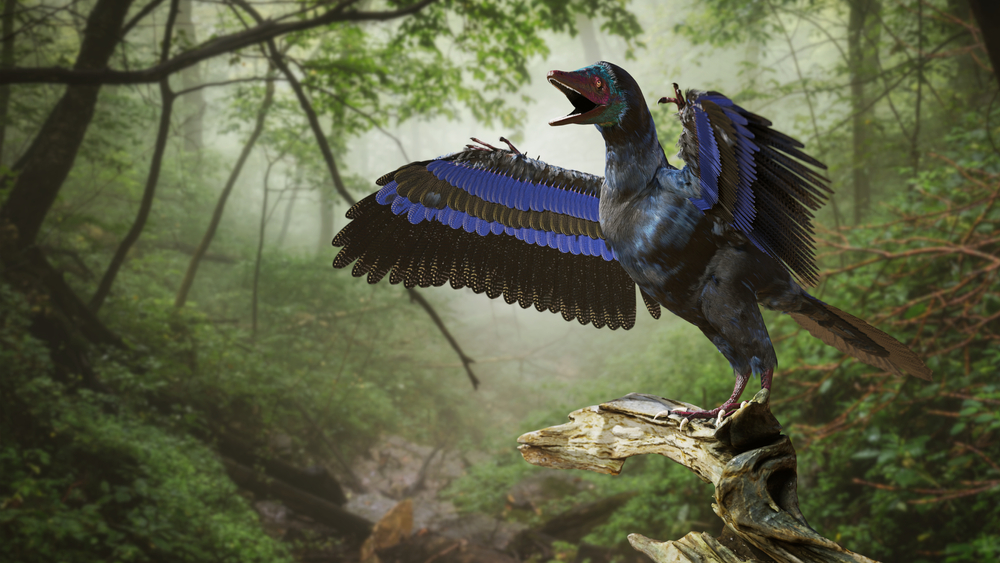
Nearly every religion has origin stories about our planet and its creatures. These range from the mundane to the fantastic, with the Genesis account somewhere in between. While the meanings of words and phrases like “days” and “creeping things” are debated, the story of creation concerning reptiles, birds, and Genesis does show a somewhat logical order to the world’s creation. But does this hold true for bird and reptile evolution? A deeper dive elicits more questions than answers.
An Ancient Forest With Amazing Discoveries
The Carboniferous Period spanned between 358 and 298 million years ago. Earth was home to a diverse mix of plants and animals in swamps and forests. Large ferns left coal-forming organic material after they decomposed—hence how the Carboniferous Period got its name. Alongside these herbaceous remains, ancient animals left fossilized remains.
Nova Scotia’s Joggins Cliffs have been nicknamed “the Galapagos of the Coal Age.” Like other regions during the Carboniferous Period, this area boasted a warm climate and massive forests filled with ferns and tree-like moss plants. The Joggins Cliffs site has yielded many fossil discoveries, including flying insects, spiders, snails, and amphibians. The nearby sea was probably a mix of river and ocean water where crustaceans, sharks, bony fishes, and prehistoric ray species lived. But this site also held the key to understanding reptilian evolution.
One Small Lizard, One Giant Evolutionary Leap
During the mid-1850s, Sir William Dawson discovered a fossil of Hylonomus lyelli at Joggins Cliffs. He documented its discovery in an 1860 report to the Geological Society of London. The Smithsonian Magazine mentions that the fossil was found inside the remains of a giant fern so tall that its top towered at least 20 meters above the ground.
Hylonomus measured only 20 centimeters from snout to tail, but this tiny lizard would have a massive impact on natural history. It’s not only the oldest reptilian specimen found to date, but it’s also the first known animal that laid amniotic eggs. This sets it apart from its amphibian predecessors, who returned to the water to lay eggs. This small reptile also set the stage for dinosaurs, which first appeared around 240 million years ago. In turn, two more branches of vertebrates would eventually descend from Hylonomus: birds and mammals.
Which Came First: The Scale or the Feather?
In Genesis 1:24-26, God orders the Earth to bring forth “cattle, creeping things, and wild beasts.” This description could broadly include arthropods, reptiles, and mammals. Reptiles likely fall under the “creeping things” category, since they aren’t livestock, domesticated pets, or mammals that live out in the wild.
What’s interesting is that Genesis depicts birds being created before reptiles. Genesis 1:20-22 mentions birds “flying above the expanse of the water.” The word in that passage translated as “bird” is “oph” in Hebrew, written as וְעוֹף֙ at that part of the text. Broadly speaking, it refers to flying creatures. But its most common translations include “bird,” “fowl,” or “chicken.”
But wait a minute. Didn’t birds evolve from reptiles? The Jewish scholar Maimonides proposes a possible answer to questions like these. Professor Jeffrey Tigay explains the scholar’s reasoning in My Jewish Learning. “If the eternity of the universe could be proven by logic,” then scriptural creation accounts can be understood figuratively. Maimonides, Saadia Gaon, and other Jewish thinkers thought that scientists were the best ones to answer scientific questions. Scripture, they held, does not require literal interpretation.
Details Versus the Big Picture
Dr. Tigay argues that Biblical literalism forces scriptural texts to compete with science. Yet we can see how some details complement each other, particularly in the Genesis story. We don’t fully know how its writers determined the order of creation. But why does it match evolution’s timeline? The answer to that question must still be found.

